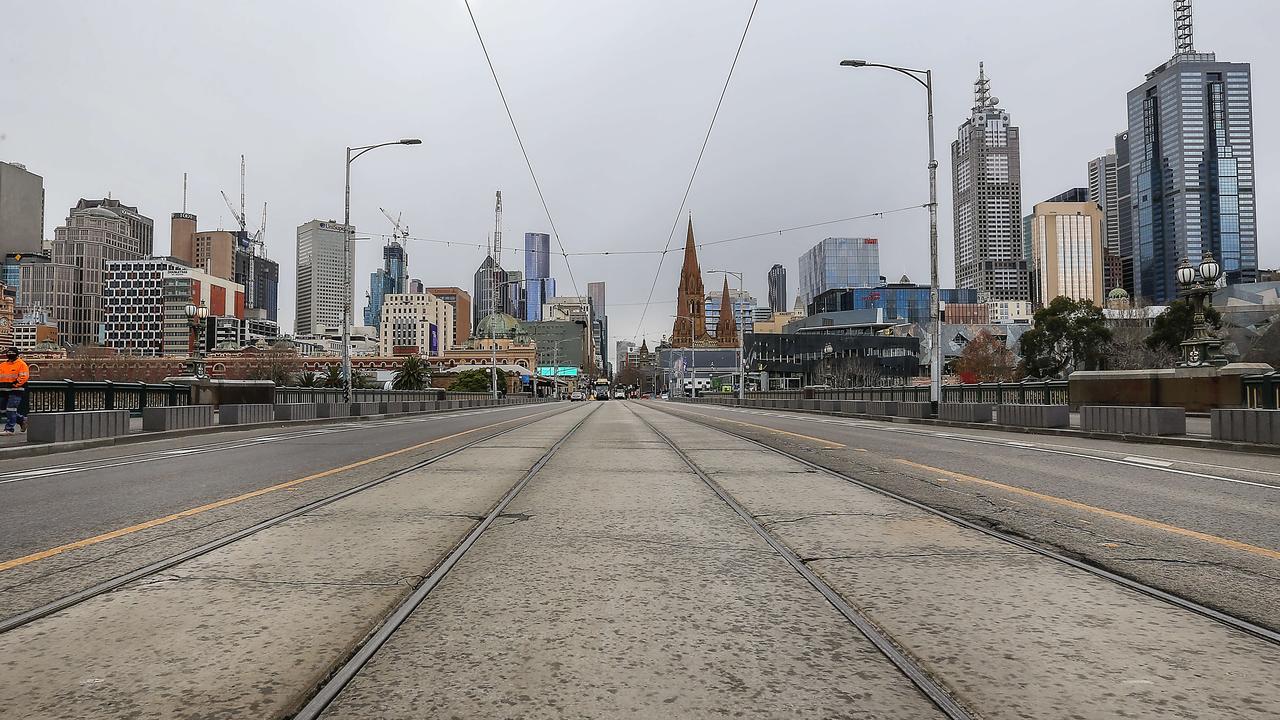Editorial: Grand Final precautions
AS thousands of fans line city streets for tomorrow’s AFL parade and more than 130,000 flock to the MCG and Punt Rd oval on Saturday, police will be working hard to protect against the unthinkable.

Opinion
Don't miss out on the headlines from Opinion. Followed categories will be added to My News.
AS thousands of fans line city streets for Friday’s AFL parade and more than 130,000 flock to the MCG and Punt Rd oval on Saturday, police will be working hard to protect against the unthinkable.
As revealed in today’s Herald Sun, Victoria Police, together with federal agencies is placing huge resources into providing optimum security for the Grand Final and related festivities.
The sad reality is in modern times comprehensive measures and security precautions have to be applied to protect against the threat of terrorism.
While no specific or elevated terror risk has been identified in relation to the Grand Final, the national terrorism alert level remains at “probable”.
Government leaders and police encourage Australians to continue to live their lives as normal, to attend sporting events, concerts and other gatherings. To do otherwise would be to submit to criminal threats of mass violence. But a high degree of vigilance is required to keep the community safe. The public has confidence in the professionalism and ability of police and security agencies in their role to prevent threats from materialising into action. In recent years federal and state police, together with ASIO, have disrupted 13 significant plots on the domestic front.
Authorities in Melbourne will deploy extra bollards to protect against the threat of rogue vehicle attacks over the Grand Final weekend.
Following the horrors in France, England and Germany, temporary barriers will line the Grand Final parade route and pedestrian corridors leading to the MGG, including Brunton Ave, to separate fans from vehicles.

With a high-visibility presence, more than 1000 uniformed officers will patrol busy precincts, as well as plain-clothed police and security agency specialists tasked with providing safety.
Additional CCTV cameras will also be positioned to enable police to monitor crowds and movement.
Highly trained tactical response officers will be on standby in case there is a critical event.
Security at entrances to the MCG is designed to ensure every patron is scanned with handheld metal detectors and all bags are searched.
The Yarra Park carpark will also be closed to most vehicles as part of the security operation.
Lessons are also being learned from overseas incidents in London, Barcelona and Manchester, with a senior Victoria Police counter-terrorism expert recently returning from high-level talks with counterparts to assist with intelligence for this year’s Grand Final planning.
Separate to the counter-terrorism protections, the Andrews Government should insist that VicRoads closes Punt Rd, Swan St and Bridge Rd after Grand Final football traffic leaves.
Win or lose, Richmond’s drought-breaking presence in the Grand Final will be met with huge crowds flooding into the area.
Traffic disruption is inevitable and the major arterials should be temporarily closed to provide greater fan safety.
Unless Victoria Police advises security planning requirements mean the roads should remain open, it makes sense to restrict vehicle traffic for a period after the final.
Masses of people are likely to remain in the precinct and make their way to venues in Richmond.

REMEMBERING THE LOST
HAROLD Wanliss, an orchardist from Victoria, was “possibly destined, if he lived, to lead Australia”, according to the war historian Charles Bean.
Victoria Cross recipient Albert Jacka described Captain Wanliss as “a hero and a man”. Tragically, he was killed by machinegun fire 100 years ago as he led his men at the atrocious battle of Polygon Wood. At just 25, the Ballarat College dux was one of 5770 casualties in that awful fight in Belgium. Who knows how many civic leaders, doctors, lawyers, athletes or even potential prime ministers were lost in the Polygon Wood carnage at the site of the third battle of Ypres.
The World War I battles at Menin Road from September 20, 1917 and Polygon Wood from September 26, 1917 saw Australian 4th and 5th Divisions in partnership with British and other dominion forces engage the German Fourth Army.
In eight weeks of fighting in the battles of Menin Road, Polygon Wood, Broodseinde, Poelcapelle and the First Battle of Passchendaele, Australian forces incurred 38,000 casualties. Together with the 1916 campaigns at Fromelles and Pozieres, they were some of the most brutal exchanges of the war.
Governor-General Sir Peter Cosgrove this week led a commemoration at the grave of Australian private Patrick Bugden, 20, who was awarded a posthumous Victoria Cross. The sacrifice of Pte Bugden, who died a century ago today, like Cpt Wanliss and so many other Diggers, should never be forgotten.
All Australians should reflect on the bravery and patriotism of these young men, so long ago.


